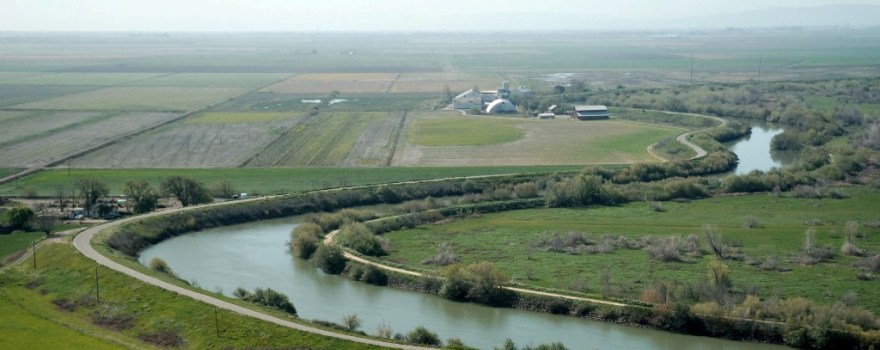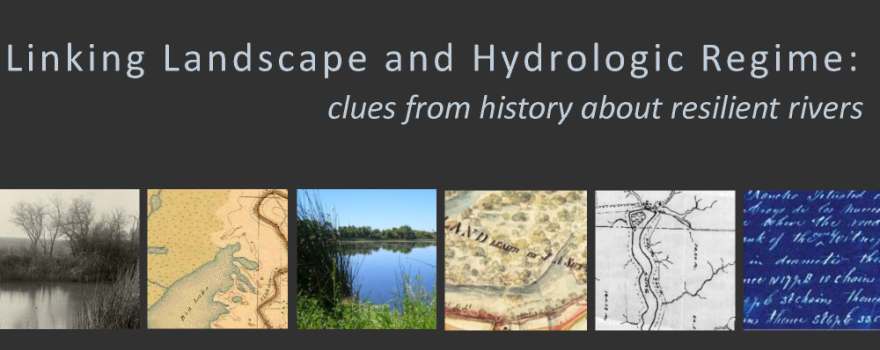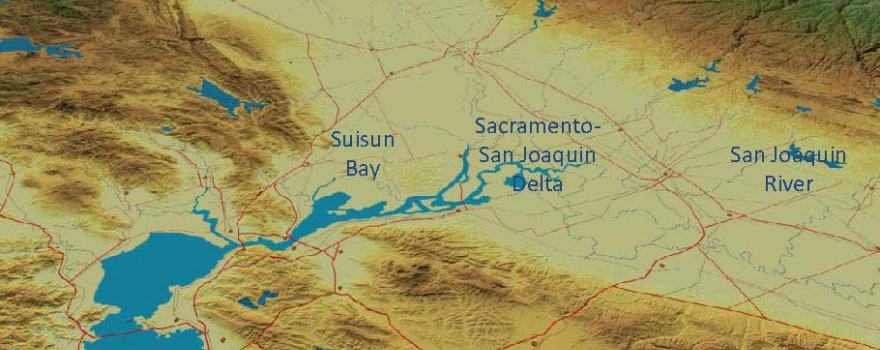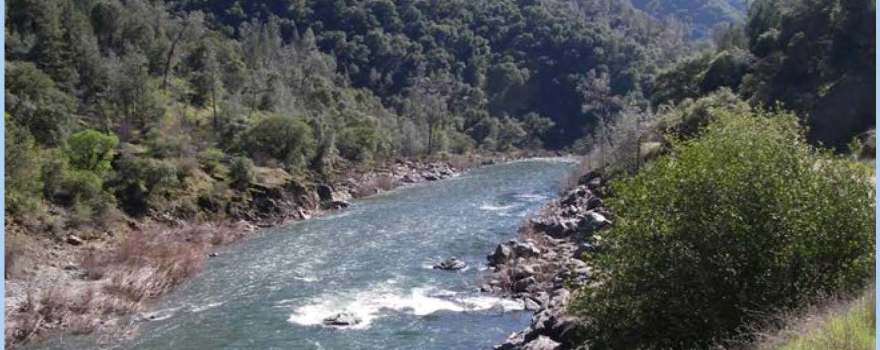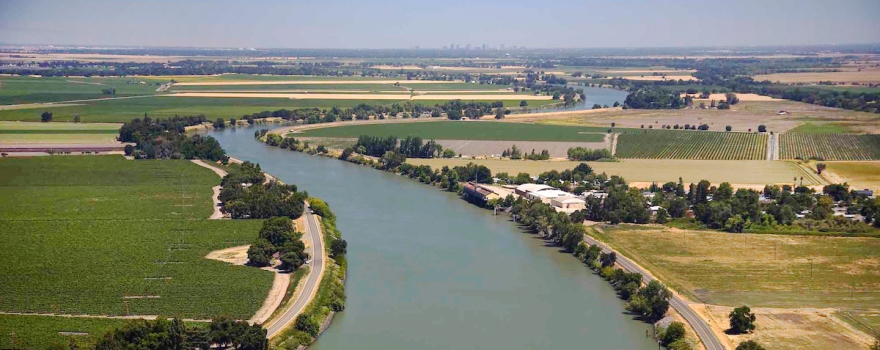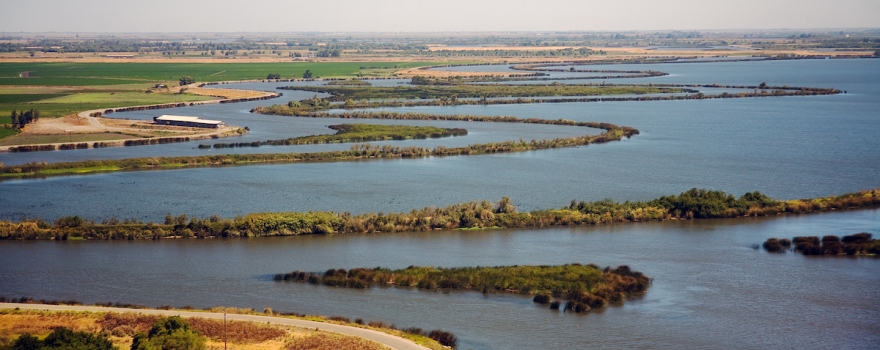In January of 2013, a symposium hosted by Delta Science Program and the UC Davis Center for Aquatic Biology and Aquaculture (CABA) titled, What is a Natural Hydrograph in Regulated Rivers? The Science of Natural Flows to the Delta, explored how the hydrologic regime of Delta inflows are impacted by land-use changes, diversions from the watershed, and climate change. These concepts are important since successful restoration in the Delta relies on restoring the physical processes within the landscape that will sustain chemical and biotic processes that support native biological community resilience.
The extent to which physical processes and ecosystem functions can be recovered is an important question and is heavily influenced by the flow regime. But this poses the question of what is natural or even functional flow if the very landforms that historically shaped the hydrograph are now modified? Given these systemic changes, what do we mean by a natural hydrograph or unimpaired flows?
DR. GEOFFREY PETTS: In-stream Flow Science for Sustainable River Management
 The plenary lecture was given by Dr. Geoffrey Petts, Vice-Chancellor of the University of Westminster, a position he has held since 2007. His research is at the interface of hydrology, geomorphology and ecology to address the sustainable development of water projects. He has published 20 books and more than 100 scientific papers, and is founder and Editor-in-Chief of the international journal River Research and Applications.
The plenary lecture was given by Dr. Geoffrey Petts, Vice-Chancellor of the University of Westminster, a position he has held since 2007. His research is at the interface of hydrology, geomorphology and ecology to address the sustainable development of water projects. He has published 20 books and more than 100 scientific papers, and is founder and Editor-in-Chief of the international journal River Research and Applications.
Dr. Petts began his presentation with a thought: “Are we really concerned with rivers flowing to the Delta, or are we talking about river flows for the Delta? The starting point is very important, because I think if you were starting with the question, what are the river flows that you need to sustain the functional development of the Delta and the transition zone, that’s a very different starting point and end point perhaps than talking about the functional flows in the regulated river.”
Click here to continue reading this presentation.
CHRIS ENRIGHT: What Do We Mean by “Natural Functional Delta Inflow” in a Regulated and Modified System?
 “The issue here for the day is really what do we mean by natural functional flows,” began Chris Enright, Senior Water Resources Engineer for the Delta Science Program (now retired). “What’s a natural hydrograph in regulated rivers, and the science of natural functional inflows to the Delta? So right off the bat, we have a contradiction; natural and functional. Think about it; those two terms in many ways don’t even belong together, and in some sense, that’s the purpose of this workshop is to crack that open and try to make some sense of it. Prior to the Gold Rush, natural and functional would have been redundant, because what was functional was natural, so we didn’t need to distinguish, but the Central Valley watershed is enormously modified and regulated.”
“The issue here for the day is really what do we mean by natural functional flows,” began Chris Enright, Senior Water Resources Engineer for the Delta Science Program (now retired). “What’s a natural hydrograph in regulated rivers, and the science of natural functional inflows to the Delta? So right off the bat, we have a contradiction; natural and functional. Think about it; those two terms in many ways don’t even belong together, and in some sense, that’s the purpose of this workshop is to crack that open and try to make some sense of it. Prior to the Gold Rush, natural and functional would have been redundant, because what was functional was natural, so we didn’t need to distinguish, but the Central Valley watershed is enormously modified and regulated.”
Click here to continue reading this presentation.
ROBIN GROSSINGER: Delta Inflows of the Past: Lessons for Connecting Landscape Elements – Hydrograph Variability and Functions from the Historical Landscape
Robin Grossinger, Senior Scientist at the San Francisco Estuary Institute, began by saying he felt well-set up by the first two presentations. “I think they both addressed straight on the paradox we find ourselves in, which is that we know that we can’t restore the past, we can’t recreate the historical conditions that these rivers experienced, and yet we know equally that we need to reestablish more natural – as nature intended – hydrology and morphology, and so we find ourselves in this impossible situation,” he said. “But they both presented creative strategies, taking clues from the past in terms of hydrology, in terms of morphology, and creative ways those can be brought into our systems today. And I think implicitly, I agree with the idea there’s a lot of room for improvement, even within the dramatic constraints that we face. That’s what I think is exciting.”
Mr. Grossinger said his presentation is going to delve into the interrelated aspect of riverine landscapes and wetland landscape with the hydrograph or hydrologic regime. “I think historical research is helpful because it can help us illustrate some of those connections as we really don’t talk about both in the same breath typically. We talk about hydrology and we talk about restoration but those are two different agencies usually, or groups in agencies; they are different researchers with different research trajectories in communities, and so I think that’s part of the reason we don’t tend to connect these things which are obviously critically intertwined – reciprocal, even.”
Click here to continue reading this presentation.
DR. BRUCE HERBOLD: Hydrographs and Ecological Functions in the Present-day Landscape of the Sacramento River
Dr. Bruce Herbold, Estuarine Ecology consultant, now retired from USEPA, began by saying he would be focusing on the Sacramento River and its tributaries, and some about the Delta, and he would be focusing on some of the work he has been doing for the EPA. “EPA Headquarters is trying to develop some guidance on how to put flow into discussing water quality concerns for the protection of beneficial uses,” he said. “That all sounds boring, but I don’t find it boring. And I’m going to talk about conceptual models.”
 He presented a slide with two pictures, noting it was two different visions of the rivers flowing through the Delta. “The lower right hand corner is an integral part of San Joaquin salmon and steelhead migratory corridor. We talk about flows through there. You know, they don’t do so well no matter what we do as they do up in the upper left corner. So talking about flows independent of geomorphology, especially I think in this system is stupid.”
He presented a slide with two pictures, noting it was two different visions of the rivers flowing through the Delta. “The lower right hand corner is an integral part of San Joaquin salmon and steelhead migratory corridor. We talk about flows through there. You know, they don’t do so well no matter what we do as they do up in the upper left corner. So talking about flows independent of geomorphology, especially I think in this system is stupid.”
Continue reading this presentation by clicking here.
DR. SARAH YARNELL: Ecological Response to the Unregulated Spring Flow Regime in the Sierra Nevada
Dr. Sarah Yarnell is Associate Project Scientist at the Center for Watershed Sciences, and her presentation was drawn from research she and her colleagues have done regarding the relationships between aquatic native species and instream flow regimes.
Specifically, she will be talking about research they conducted in the northern Sierra mountains draining into the rim dams, some of the research on the restored floodplain on the Cosumnes River,  the ecological cues that native species use in relation to the flow regime, the effects of those flow regimes in regulated and unregulated systems, some of the research of climate change impacts on flow regimes, and then talk about some of the potential implications for management in our Sierra and rivers here in California.
the ecological cues that native species use in relation to the flow regime, the effects of those flow regimes in regulated and unregulated systems, some of the research of climate change impacts on flow regimes, and then talk about some of the potential implications for management in our Sierra and rivers here in California.
California’s Mediterranean climate is particularly driven by wet flood regimes in the winter and drought in the summer. “What happens in the transition between those two, particularly the snowmelt recession transition, becomes a real key time that’s an indicator for our species in these systems,” she said. “It’s the one time where we do have high flows in the river, there’s high resources available, but the flows are predictable. They are not flashy; they are not changing erratically, and so because of that, there’s a moment of opportunity for species who are adapted to this flow regime to be able to cue their life history and their reproduction around this predictability and time. This then results in actually a relatively high diversity for our systems here in California.”
Click here to continue reading this presentation.
DR. CLIFFORD DAHM: Examples of Managed Flow Regimes – Possible Models for the Delta?
 Dr. Clifford Dahm began by noting that his presentation will present possible models for the Delta, drawing on some of the work he’s done over the last 15 years relating to the issue of flows and setting flow criteria in systems that have a high degree of human impact and human management.
Dr. Clifford Dahm began by noting that his presentation will present possible models for the Delta, drawing on some of the work he’s done over the last 15 years relating to the issue of flows and setting flow criteria in systems that have a high degree of human impact and human management.
Dr. Dahm gave five short vignettes to spotlight the work being done to set flow criteria for rivers from South Florida, New Mexico, Texas, the Murray-Darling Basin in Australia, and South Africa.
Click here to continue reading this presentation.
PANEL DISCUSSION: The science of natural functional flows to the Delta
“Some would argue that more storage in the system would actually benefit native species and our ability to provide environmental flows,” began moderator Chris Enright.  “It could be that would allow us to harvest wet year flows. So, additional storage allows us to do that. It allows us, perhaps, to have water for drier years. One thing we also know in this system is when wet years happen, good ecology happens. We generally have high abundances of all of our native species. The question is, do we maintain wet years as natural flow years or do we harvest those years and use those waters in other year times, perhaps dry year types?”
“It could be that would allow us to harvest wet year flows. So, additional storage allows us to do that. It allows us, perhaps, to have water for drier years. One thing we also know in this system is when wet years happen, good ecology happens. We generally have high abundances of all of our native species. The question is, do we maintain wet years as natural flow years or do we harvest those years and use those waters in other year times, perhaps dry year types?”
“Dr. Petts talked about a smart flow regime that would identify base flows and protect those, identify flood flows and protect those, and then, allow for some percentage of sort of natural flow pattern in the mid range. So, there are lots of perspectives. Harvest wet flows. Protect that diversity of hydrologic input. Protect those at a disturbance regime.
“So, the question to the panel, based on what you’ve heard and based on just common sense about smart flows, if we were to protect a portion of the hydrograph in its more natural state, what would we look to first? What water year types?”

